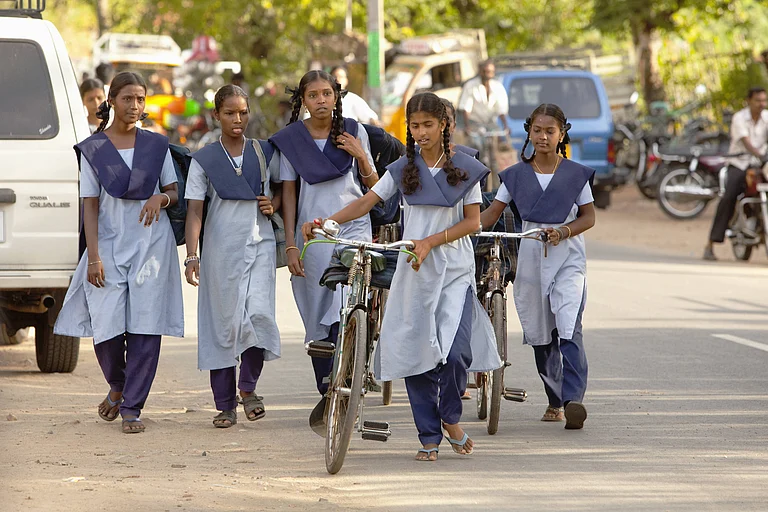We are witnessing a watershed moment for advancing gender equity and equality for women, as we slowly inch closer to the SDG deadlines. Last year, India climbed eight places in the annual Gender Gap Report 2023 in terms of gender parity; a good sign many will argue, but also a clear indication that a lot more needs to be done. The government’s many initiatives for women’s empowerment are a testament to its commitment to improving gender parity. However, there needs to be a systemic change and increased financing to match the ambitious plans.
First step of gender equity is Inclusive education
Inclusion truly is the cornerstone of progress. Ensuring girls have equal opportunities for access and quality education is the first step to attaining gender parity. The Samagra Shiksha initiative by the government provides access to quality education for all. However we cannot be oblivious to the intersectionality of the challenges that are faced by girl children and their opportunities for equal education. Investing in safe environments for girls, creating an ecosystem of care for younger siblings, ensuring access to toiletsand behavioral change campaigns are all keys to incorporating systemic changes to arrive at inclusivity.
Focus on skilling of Young Women
Investing in skilling young women to empower them for increased equal participation in the workforce is critical. When we equip our girls and young women with the requisite skills and knowledge to confidently enter the workforce, we set in motion a chain of events that positively impact other outcomes. We break generational cycles of child marriage which lead to poor maternal as well as child health, we improve access to nutrition, and we break cultural and societal norms that restrict women to only specific activities. The skilling initiatives by the Ministry of Skill Development and Entrepreneurship and Ministry of minority affairs for young girls are a great example to this end and aligned with the revamped NEP (National Education Policy) However, more public-private partnerships are required for offering further opportunities to girls to interface with the private sector workforce and its needs.
Getting our women to advance In tech
This brings me to another pertinent aspect around focus on STEM education for girls which will ensure we have a cohort of young women year on year who are driven by innovation, critical thinking and creativity. This is all the more important considering that women make up only 14% of the total workforce in STEM fields in India. We must integrate innovation and critical thinking early in K-12 education so that girl children are encouraged to take up tech-based courses later during higher education.
Women as leaders and decision makers
We need to move towards a world where women have a greater voice in decision making, across policy, business and communities. We must encourage and hone young women to have a stronger agency and be equipped to lead businesses. What also needs to be addressed is the fact that access to credit for women entrepreneurs still remains a challenge, with institutional gender bias limiting their growth. What we are looking at is a gigantic untapped potential of women world over. In fact, gender parity in entrepreneurship could add 5-6 trillion USD in net value to the global economy. This also has a cascading effect, as each women-led firm is more likely to hire female employees than male-led ones. Women need to be given equal opportunities to build and lead businesses on an equal footing as men.
It is only when we look at every aspect of our economic growth and progress with a gender-lens, can we actually advance. This is not just a way to ensure equal opportunities for women and create just economies, but it will improve economic outcomes and GDP, help us battle environment challenges and move us closer to our SDGs.





















